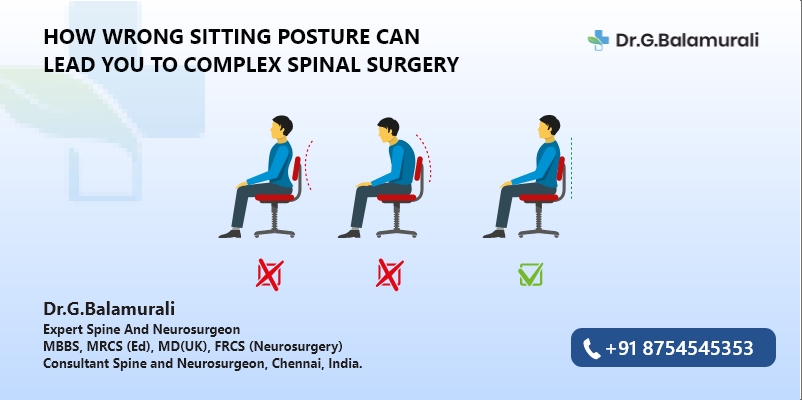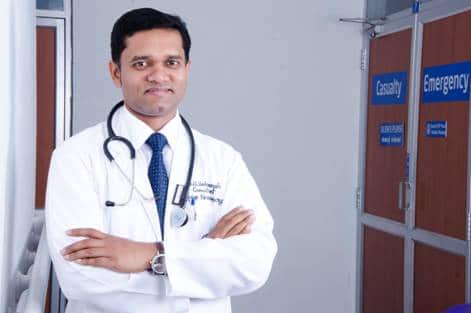
It is not uncommon to get back pain, but sometimes it can be a symptom of a more serious spinal issue that might require surgery - and only the best team of doctors and surgical equipment can guide you through it safely.
When 36-year-old Anjana (name changed) walked into Dr G Balamurali’s office, she had already been suffering from severe back pain for almost a year. A senior project manager at a reputed IT multinational’s office in Chennai, her hectic job involved sitting at a desk and staring at reams of code for several hours everyday. From the time she started out as a junior coder 15 years ago, much of her day was spent glued to the computer screen. “She had been suffering with back pain for several years since her pregnancy, but in the past year it had become severe,” recounts Dr Balamurali, Neurosurgeon and Senior Lead Consultant Spine Surgeon at Kauvery Hospital in Chennai.
Years of wrong posture had impacted Anjana’s spine immensely. Pregnancy is known to cause back pain in women, which usually improves in 3-6 months, but if it persists and if it is untreated, could lead to serious issues. While the back pain might not have originated with her bad posture, it certainly made it worse. “Her spine degeneration was pretty extreme for her age, so we had to go for a fusion surgery,” explains Dr Balamurali.
Operating on the spine of patients can be challenging for any doctor. Surgeons have to be extremely careful during the surgery since one wrong move could paralyse the patient. “One of our biggest worries is that patients can get injured during the surgery, so we take it very seriously,” the doctor says, adding, “And that is why we use the latest medical equipment for spine surgery.”
While there is some debate on whether bad posture can directly cause back pain, it is universally agreed that bad posture can worsen back pain, which may require surgical intervention.
If our routine involves repetitive actions, such as sitting at a computer all day, lifting things every day, or any physical work that regularly stresses the spine, it may produce tension and muscle tightness that can cause back pain due to progression of wear and tear. The right posture can prevent back pain, and not having it can further exacerbate it.
Our back has three natural curves: a slight forward curve in the neck called the cervical curve, a slight backward curve in the upper back called the thoracic curve, and a slight forward curve in the lower back called the lumbar curve. Good posture means keeping these three curves in balance, and distributing weight evenly on the two sides of our body.
Bad posture exerts more pressure on the spine and pulls it in the wrong direction, which causes strain on the joints, muscles and ligaments along the spine. Over a period of time, this can lead to unequal weight bearing of the spine, altered spine curvatures and chronic pain which may need surgery.
Just like Anjana’s case, back pain is usually caused by bad lifestyle and regular wear and tear of the body. Age is also an important factor.
One of the most common surgery is fusion surgery. Depending on the seriousness of the damage to the spine, various methods are used to correct it. “Usually we see that the spine is bent, or not in its right position. During a fusion surgery, we put in rods and screws in the spine and correct the disk. We also realign the spine, remove the degeneration and the compression, decompress the nerve roots, put in bone and rods, etc.,” Dr Balamurali explains. And since the surgery can be tricky, you need the right team operating on you with the right equipment.
At Kauvery Hospital, the team led by Dr Balamurali uses a range of cutting-edge medical equipment to make spine surgery safer and more efficient, and enhance the results for the patient. “We are capable of doing the same surgeries without some of these equipment, but they just make things a lot better and safer,” he explains.
“We look at three things when it comes to the latest technology: what is better for the patient, how is it going to help us tackle more complex cases, and what is to the advantage of the doctors and the staff while treating the patient,” he says, adding, “It is about accuracy, safety and reducing the complexity of the surgery.”
Take the Neuronavigator, for instance. It shows you digital map of your neural system and the spine, wherein a monitor shows the doctor what lies ahead as he operates. “Using the Neuronavigator monitoring system, I can enter the spine knowing exactly where I am going and which parts to avoid. This gives us a lot more confidence,” he says. “It’s like the third eye for accuracy,” he adds. Without the equipment, they would have to rely on x-rays, and that is harmful radiation for the staff too when used frequently.
“With this we have been able to do some complex surgeries like pediatric cases, or cases of deformity where the spine is too bent, and the surgeries are very difficult,” he adds.
Yet another path-breaking equipment which Dr Balamurali and his team use is the Neuromonitoring system. “It is a great tech advancement which prevents us from damaging the spinal cord. The spine of the patient is attached to the machine through wire, and very small electrical signals are sent through the spine during surgery. Even a slight touch of the spine will trigger an alarm, so we know that we have to be careful,” he explains.
Thanks to this, the doctors have been able to completely eliminate spine injuries during surgery. “We now have zero bad outcomes,” Dr Balamurali says with a smile.




Copyright ©2024 All Rights Reserved | Book An Appointment